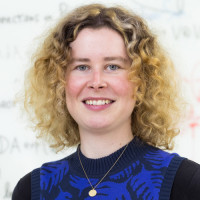Statistical methods to probe binary stellar evolution with ZTF and LISA data
- Date
- May 23 (Tue) 13:30 - 15:00, 2023 (JST)
- Speaker
-
- Lucy McNeill (JSPS Fellow, Department of Physics, Division of Physics and Astronomy, Graduate School of Science, Kyoto University)
- Language
- English
- Host
- Ryo Namba
The Laser-Interferometer-Space-Antenna (LISA) will be capable of detecting all galactic double neutron star binaries (DNSBs) with orbital periods < 20 minutes, as well as 10-100’s of thousands of double white dwarf binaries. I will present our method to use LISA detections to constrain the formation frequencies of galactic DNSBs, which are determined by supernova physics and various mass exchange processes. Next, I summarise the key differences in DNSBs and white dwarf binaries (WDBs) in the context of future LISA observations, as well as the current Zwicky Transient Facility (ZTF) for the latter. Then we will examine the current catalogue of short period white dwarf binaries (orbital periods < 1 hour) detected by ZTF so far, including the first ever measurement (Burdge et al. 2023) of the temperature of a mass transferring white dwarf in a binary. Here I will make the case that taken together, these observations are in conflict with the theoretical picture commonly used in Galactic modelling- specifically related to cooling and mass transfer leading to WDB mergers. However, heating from tidal interactions may explain and mediate this inconsistency. Finally I will put these results into context regarding preparing for the unprecedented data set of galactic white dwarf binaries from LISA in the 2030s.
This is a closed event for scientists. Non-scientists are not allowed to attend. If you are not a member or related person and would like to attend, please contact us using the inquiry form. Please note that the event organizer or speaker must authorize your request to attend.

